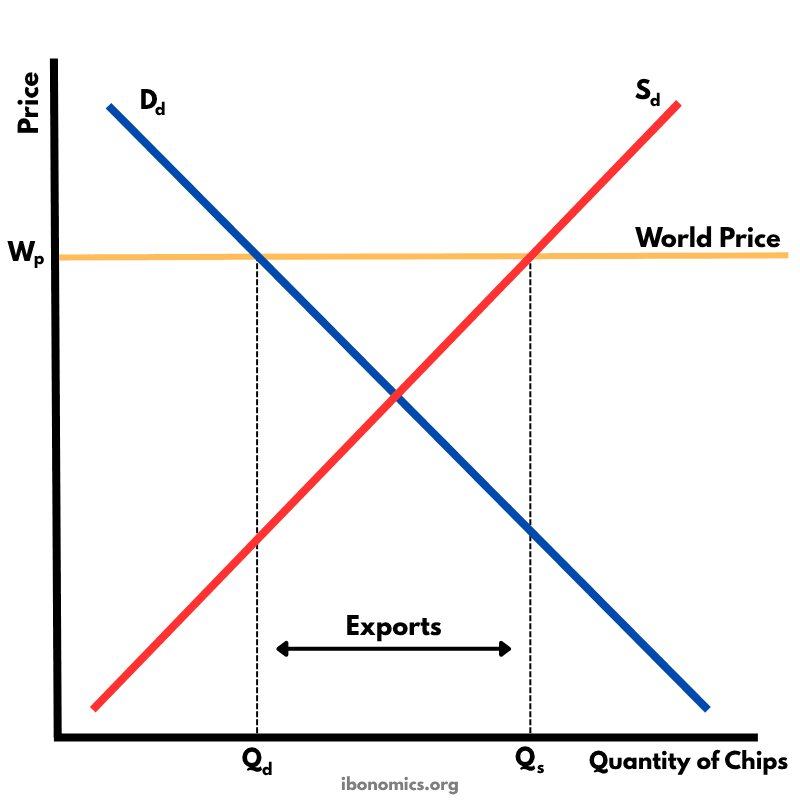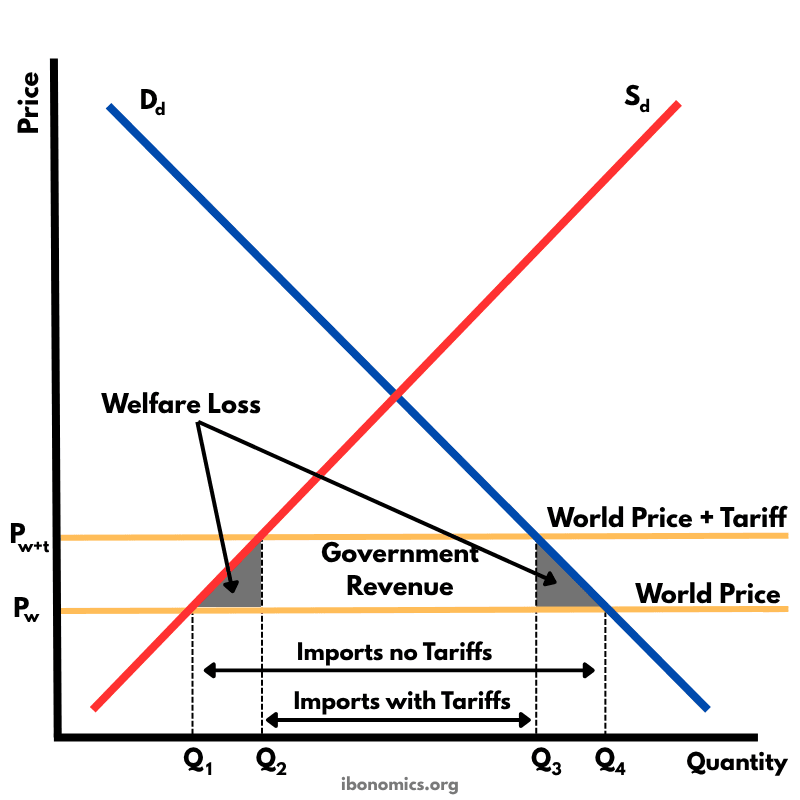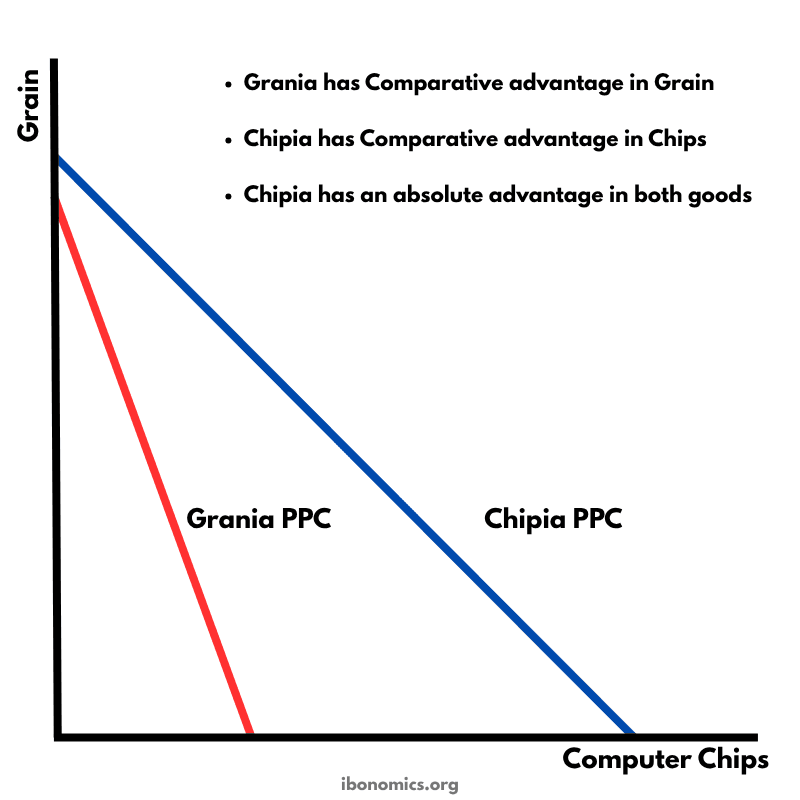Export Subsidy – Price Effects and Welfare Loss
This diagram shows how an export subsidy raises the domestic price above the world price, encouraging producers to export more while reducing consumer welfare and creating deadweight losses.

dd
Dd: Domestic demand curve for the good.
sd
Sd: Domestic supply curve without subsidy.
pw
Pw: Free-trade world price.
pw s
Pw+s: Domestic price after subsidy (world price plus subsidy).
q1
Q1: Domestic quantity demanded after subsidy.
q2
Q2: Domestic quantity supplied before subsidy.
q3
Q3: Domestic quantity supplied that would equalize exports without subsidy (shown for reference).
q4
Q4: Domestic quantity supplied after subsidy.
exports no subsidy
Exports without subsidy: Q4 − Q2 at Pw.
exports with subsidy
Exports with subsidy: Q4 − Q1 at Pw+s.
welfare loss
Welfare Loss: Two grey triangles representing deadweight losses from over-production and under-consumption.
Under free trade at the world price (Pw), domestic producers supply Q2 and domestic consumers demand Q4, with exports equal to Q4 − Q2.
An export subsidy allows firms to sell abroad at Pw while receiving the subsidy, so they raise domestic prices to Pw+s (world price plus subsidy).
At the higher price Pw+s, domestic production expands from Q2 to Q4, while domestic consumption falls from Q4 to Q1, increasing exports to Q4 − Q1.
Government budget pays the subsidy per unit exported, generating two welfare-loss (deadweight) triangles: one next to producers (over-production) and one next to consumers (under-consumption).
Although producers gain from higher prices and greater output, taxpayers finance the subsidy and consumers face higher prices, leading to a net welfare loss.
More Global Economics Diagrams
Explore other diagrams from the same unit to deepen your understanding

This diagram shows how a country exports goods under free trade when the world price is higher than the domestic equilibrium price.

This diagram illustrates how a country imports goods under free trade when the world price is lower than the domestic equilibrium price.

This diagram shows the effects of a tariff imposed on imported goods. A tariff raises the price of imports, protecting domestic producers but creating welfare losses.

This diagram illustrates the effects of an import quota, a trade protection measure that limits the quantity of a good that can be imported. Quotas raise domestic prices, benefit local producers, and reduce consumer surplus.

This diagram illustrates the effects of a production subsidy, where the government supports domestic producers to lower their costs and increase output. It is a form of protectionism without raising consumer prices directly.

This diagram uses production possibility curves (PPCs) for two countries—Grania and Chipia—to illustrate absolute and comparative advantage and the potential gains from trade.